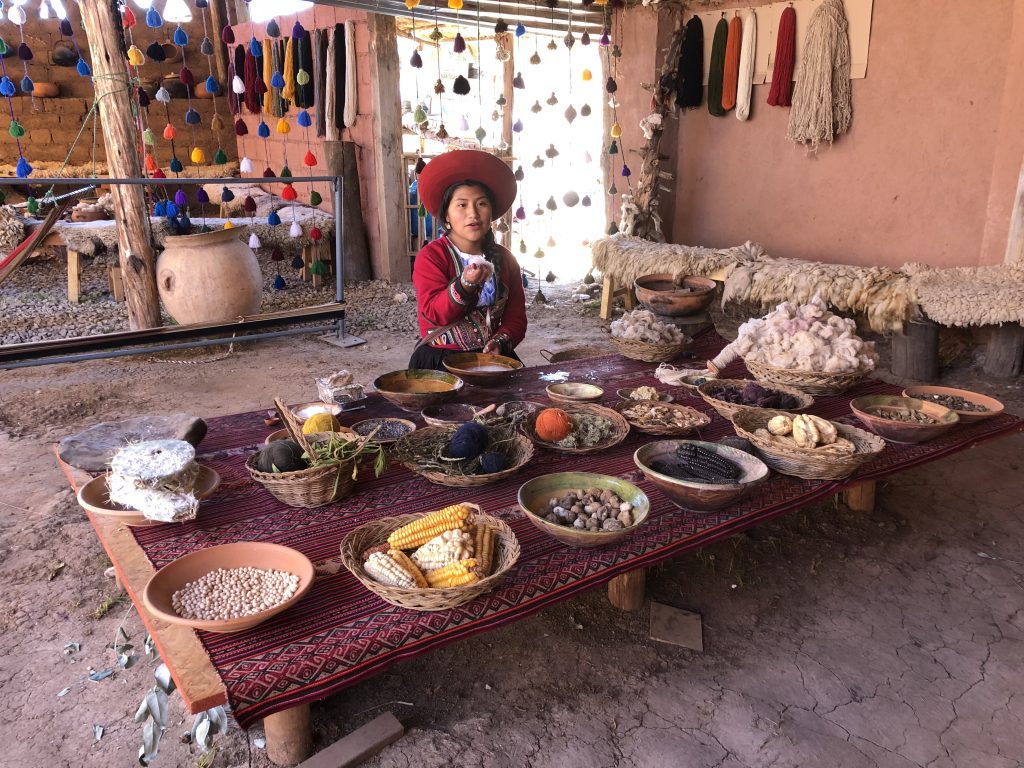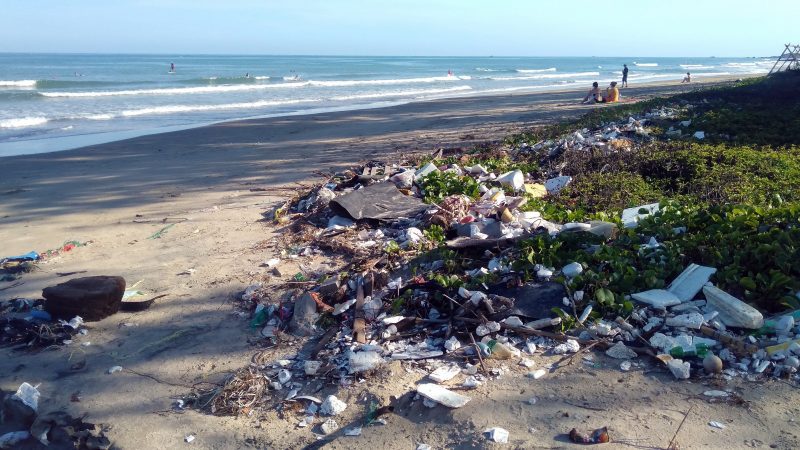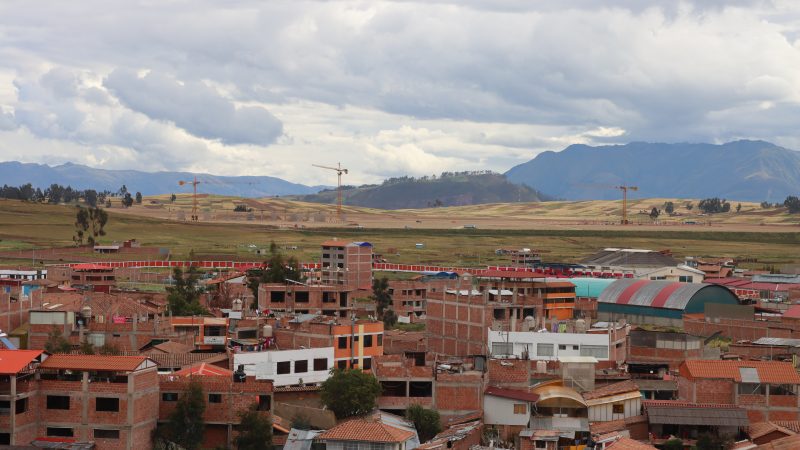Indigenous tourism has been getting a lot of attention lately; The New York Times and Forbes have both published articles on the subject in the first few months of 2024 alone.
I personally think this is because many people recognize and want to begin rectifying the inter-generational trauma that has been inflicted upon so many indigenous communities around the world. At the same time, we’ve begun to seek out more unique, authentic experiences when we travel, not only for enjoyment but also for enrichment. The two intersect through the idea of responsible indigenous tourism.
This page may contain affiliate links; if you make a purchase through them, I may receive a small commission at no cost to you.
Table of Contents
First, a few clarifications
What is indigenous tourism, exactly? The SAGE International Encyclopedia of Travel and Tourism (2017) gives us a good, concise definition: “tourism activity directed by indigenous people or in which the culture of the indigenous people is the primary attraction”.
And what about indigenous people? They’re defined as those who originated from a place (and nowhere else), and who are generally excluded from predominant economic and governmental systems where they reside. In the Americas and Australia it’s generally quite clear due to the history of settler colonialism. In Africa and Asia it’s more complex, and the exclusionary criteria tend to take precedence – the Maasai of Kenya and Tanzania, the Berbers of North Africa, and the Ryukyuans of the southern Japanese islands are examples. The common thread for indigenous groups throughout the world, however, is a history of disempowerment and marginalization.
Indigenous tourism is offered on every inhabited continent on Earth, and it’s projected to grow by 50% over the next decade (Future Market Insights, 2024). It brings income to indigenous communities and can enrich lives around the world through increased cross-cultural understanding and awareness.
But are there potential downsides as well? You betcha. Let’s return to the SAGE definition: note the use of the word ‘or’, meaning that indigenous tourism can feature indigenous people as the primary ‘attraction’, without it being directed or controlled by those individuals in any manner. It’s easy to see where that can go wrong, and I won’t dwell on this point but simply say that examples of exploitation through indigenous tourism are unfortunately easy to find.
So, how can intentional, responsible travelers ensure that they engage in indigenous tourism that has a positive impact? It can sometimes be difficult to be 100% sure, but I’ll offer a few suggestions, highlight some of the telltale signs of an inclusive indigenous tourism offer and some of the more obvious pitfalls to avoid.
But first, a story from my own experience with indigenous tourism, which highlights some of these challenges. Looking back, this particular day tour and my subsequent reflections upon it have affected me more deeply than pretty much any other day tour I’ve ever taken. Warning: it’s not a happy story, and this was definitely NOT one of my prouder moments as a tourist.
Cautionary tale: my visit to Isla Taquile, Lake Titicaca, Peru
In 2018, my family and I spent 8 weeks visiting three different countries in South America, including the Lake Titicaca region straddling Peru and Bolivia. We spent the night on a floating island in the lake (I mentioned that visit in this post) and the next day joined a boat headed to Isla Taquile, an island in the lake which is home to a small indigenous community. The boat tour was booked on our behalf by someone on the staff of the floating island, so I had no idea who was operating it.
We transferred onto the boat (which had already visited a different floating island early that morning), and upon arriving on Isla Taquile our guide took us on a short hike up to one of the higher viewpoints, after which we were led to a new-looking building housing a restaurant with outdoor terrace. We were given a short cultural and crafts presentation followed by a music and dance performance, which we were invited to join in with community members. After that we had lunch, then walked down the other side of the island, got back on the boat, and returned to the city of Puno.
At first, I thought we’d had an amazing and authentic experience, and for sure we did learn something about the islanders’ culture while spending a gorgeous, sunny day in that stunningly beautiful place. But there were also some red flags I ignored in the moment, above all the young woman who took me by the hand to lead me in the dance. I wore a huge smile, although I did feel a bit awkward; she, on the other hand, scarcely made eye contact with me and never once smiled, just went through the motions of leading me through the dance. It was all a big performance, and she was playing her role. In hindsight, it felt much more contrived than sincere.
Yet Isla Taquile’s tourism management is considered a success story, where Taquileños created a community tourism enterprise to benefit the entire community. Through this they are said to have taken charge of tours to the island through that enterprise, Munay Taquile (although their facebook page points to a website that no longer exists, and there are no posts since 2019 so the pandemic may have shut it down). Tourism to the island continues, of course, but under what auspices I cannot say.


Was my 2018 tour part of this enterprise, or was the community paid only a paltry sum for providing lunch and a little show to tourists brought in by an outside company? I’ll maybe never know for sure, but I strongly suspect it was closer to the latter. It wouldn’t be the first time a situation like that occurred, after all.
I’ve been reflecting upon that visit ever since and have felt increasingly uncomfortable at having taken part in it, and especially thinking (for a bit, at least) that it was such a great experience. I’ve tried to treat it as a learning experience, and I’m sharing the story in the hope that it helps my readers to:
- understand how easy it is to unwittingly end up taking part in an indigenous tour that may be controlled by others and do little to nothing to help the community, and
- realize what a difference it can make, to your experience as a traveler and to the communities you visit, to make the effort to find the experiences that really do bring benefit.
And with that, here are my tips!
Do a little research
I’m not talking about hours spent digging through literature about indigenous tourism, just a quick internet search. Type ‘indigenous owned lodging <your destination name>’ or ‘indigenous run tours <your destination name>’ into your preferred search engine and see what comes up. You might have to scroll through some less relevant content or tweak the search to better fit the context (for example, with a particular community’s name), but often you can uncover some interesting options this way.
But be aware, in many communities “locally-owned’ and “indigenous-owned” will NOT mean the same thing. This isn’t to say that a tourism business which is locally- but not indigenous-owned is automatically exploitative; it just means you need to read a bit more into their philosophy and operating principles. If you don’t see anything at all on the subjects of responsibility or community impact from a tourism business operating in an indigenous community, that’s a red flag. At the end of the day, it’s generally best to go with an indigenous-owned operation if you can find one.
Look for membership in/partnership with an indigenous tourism association
There are dozens of associations promoting indigenous-run tourism initiatives, although most are concentrated in the Americas and Australia. Looking at which tourism service providers are among their members is a great way to find sustainable indigenous tourism operations, as well as non-indigenous organizations which support them. Here’s a quick listing of some of the larger associations:
Indigenous Tourism Collaborative of the Americas – a network of indigenous organizations formed in 2021 and spanning various sectors touching the indigenous tourism industry throughout the Americas.
Indigenous Tourism Canada – each of the provinces (and many smaller regions) also have their own sites, but this is the big one that includes information about tourism possibilities all over Canada.
Discover Aboriginal Experiences – a terrific resource for finding opportunities to engage with Australian Aboriginal culture and communities, through experiences led by Aboriginal guides.

Look for ‘Community-based tourism’ operations
Community-based tourism, or CBT, is closely related to indigenous-run tourism in that the communities running such operations are frequently indigenous. The most effective CBT ventures are fully communally-run, ensuring that (in the case of indigenous communities) tourist activities are conducted in a manner decided by the community, for the community. And most importantly, they decide how they will represent themselves to visitors, rather than outsiders with no connection to the community.
When done right CBT can be a powerful force for development in communities which otherwise would struggle to attract opportunities for economic progress. It can also help ensure good stewardship for the environment that tourists are coming to see – a win-win all around!
And now the fun part: some of the best responsible indigenous tourism operations!
Some of the most impactful projects I’ve seen or read about are happening in the Americas. Canada, for example, has helped fund many initiatives since 2014. The US indigenous tourism market is starting to catch up thanks to recent funding increases, but the indigenous-owned lodging options continue to primarily include casino hotels rather than nature- or culture-centered options. South America also has many successful community-based operations, while Asia and Africa are somewhat still in the building phase. Partially this can be attributed to lack of autonomy, political interference and similar issues, but nonetheless there are still some early success stories.
Canada – Spirit Bear Lodge, 100% owned and operated by the Kitasoo Xai’xais First Nation, is located in the remote settlement of Klemtu in northwest British Columbia. The extremely rare white Kermode ‘spirit’ bear is the big wildlife feature here, but the setting in a coastal temperate rainforest is stunning and lots of other wildlife such as whales, black and grizzly bears, wolves, seals, sea lions, otters and more can be sighted. Learning about the history, knowledge and culture of the Kitasoo Xai’xais is of course also a big feature, and the lodge is decidedly upscale with literally everything included from the moment you check in for the flight (yes, you must fly from Vancouver and then take a boat to the site) until the moment your return flight lands. It’s expensive due to the remote location and the high level of individual service provided, but the reviews from those who have been indicate that it’s worth every penny!


Canada – in the slightly more budget-friendly category, the Kwa’lilas Hotel in Port Hardy on Vancouver Island is 100% owned by the Gwa’sala-‘Nakwaxda’xw First Nation. I featured this hotel in my guide to Vancouver Island, because it offers a terrific indigenous-centered experience, from the activities offered to the cuisine prepared in their on-site restaurant, all at a reasonable price.
Canada – if you’re up for a real Arctic adventure, coupled with an authentic view into the Inuit life in Baffin Bay, Nunavut (Canada) delivered by an Inuit-owned and operated company, Arctic Bay Adventures is the place to go!
US – the Native American indigenous tourism industry is still working to (re)build, and some tribes have opted to not welcome visitors. That said, quite a few have individually-run, small-scale tourism possibilities. Blogger Grasshopper Greg has compiled an excellent list of some of the possibilities for off-the-beaten-track indigenous tourism.
US – a different way to support US indigenous communities through tourism is by visiting one of many Native American restaurants. The good folks at AFAR have put together a list highlighting 10 different indigenous restaurants located all around the US.
Tanzania – Adumu Safaris was started by a Maasai-American husband and wife team, and a focus on Maasai empowerment and responsible ecotourism permeates their business model. They offer not only the classic safaris in Tanzania and Kenya, but also Maasai and other community-based cultural visits (controlled by the communities themselves), culinary tours, gorilla trekking in Kenya and Rwanda, Kilimanjaro climbs, trekking and biking trips, and beach breaks in Zanzibar. They’ll assemble a custom itinerary to fulfill your wishes, with a variety of lodging options and top-notch service. They even cater to families with young children! I’ve yet to visit East Africa, but their reviews are fantastic so when I do this is the company I’ll be contacting!
India – En Ooru Tribal Heritage Village, Wayanad District, Kerala. Nestled in the mountains of Kerala at almost 900 meters of elevation, this center of tribal heritage describes itself as “an ethnographic gallery that showcases ethnicity, cultural practices, tribal social organization, ancestral traditions, tribal art and cultural expressions”. The Wayanad District has the largest tribal population in Kerala, and the center was built to highlight the cultures of the various tribes of the region. The setting is quite serene and the center is open 9am to 5pm every day. They don’t yet offer lodging but there are plenty of options nearby, and with the coast only two hours away it’s also possible as a daytrip.
Fun part, Part 2: which tour operators offer responsible indigenous tourism experiences?
If the idea of sorting out all the details of your own trip to indigenous lands gives you the heebie-jeebies, don’t worry! There are some great tour companies out there who are doing the heavy lifting of creating tours that benefit indigenous communities…unless they’re already run by the communities themselves, that is! They’ve got you covered!
Alpaca Expeditions – a top-notch tour provider based in Cusco, Peru. Founded by an indigenous former Inca Trail porter, they started out offering treks in the Sacred Valley region but have since expanded to offer treks and tours to places throughout Peru, including Lake Titicaca and the Amazon basin. I did the Inca Trail trek to Machu Picchu with this company in 2018, and I cannot say enough about the quality of their operation, their values, and the friendliness of everyone I encountered on my trip with them. Highly recommended!
Intrepid Travel – if you’re a regular reader, you’ll already know that I’m a fan of this company. They get a lot of things right when it comes to designing responsible trips, and they have some great tours that incorporate visits to indigenous communities all around the world, often including meals and overnight stays. They partner with various organizations and foundations, such as the Cultural Heritage Economic Alliance in the US, to ensure that their visits to communities make a genuine difference to the people there. And as an Australian company, they are part of Reconciliation Australia and have created a Reconciliation Action Plan (RAP), highlighting actions they commit to undertake in support of the reconciliation movement.
MEJDI Tours – another favorite of mine, this company offers a very unique, fully customizable tour in the American Southwest, visiting tribal lands and offering a chance to interact with numerous elders and community residents, with plenty of opportunities for storytelling, questions, and learning about diverse topics such as cuisine, art, and language.

So, there you have it! I’ll end by saying that partaking in indigenous tourism responsibly takes a little bit of extra effort (for now at least, until the whole industry comes around to the idea), but I believe that contributing to positive developments for indigenous peoples, after so many centuries of the opposite happening, is very much worth it…and let’s not forget, it’s fun, too!! I’ve had some fantastic indigenous tourism experiences, like my visit to Puerto Nariño and Ticuna communities in the Colombian Amazonas. My entire family will fondly remember that experience for years to come – which is kind of the point of it all, right?
As always I very much welcome your thoughts, feedback, etc. Leave a comment below!
References
Elliott, C. (2024) ‘As Travelers Search for Meaning, Indigenous Tourism is Taking Off’, Forbes. Available at: https://www.forbes.com/sites/christopherelliott/2024/01/20/as-travelers-search-for-meaning-indigenous-tourism-is-taking-off/ (Accessed: 31 May 2024).
Future Market Insights (2024) ‘Indigenous Tourism Market Outlook for 2024 to 2034’. Available at: https://www.futuremarketinsights.com/reports/indigenous-tourism-sector-overview (Accessed: 1 June 2024).
Harmon, M. (2024) ‘Indigenous Tourism Goes Deeper Than ‘Dinner and a Show’’, The New York Times. Available at: https://www.nytimes.com/2024/01/15/travel/indigenous-native-led-tourism.html (Accessed: 31 May 2024).
Lowry, L.L., ed. (2017) The SAGE international encyclopedia of travel and tourism. Sage publications.




